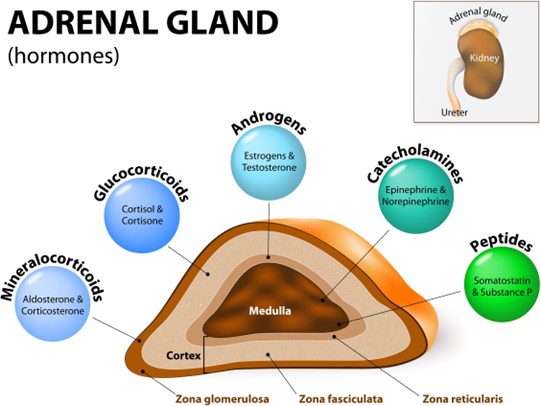The removal of wastes produced by metabolic reactions is:
Excretion.
Absorption.
Metabolism.
Assimilation.
The Correct Answer is A
Excretion is the process of removing metabolic wastes or excrements from the body.
Metabolic wastes are substances left over from metabolic processes (such as cellular respiration) which cannot be used by the organism and must therefore be excreted.
These include nitrogen compounds, water, CO2, phosphates, sulphates, etc.
Choice B. Absorption is wrong because absorption is the process of taking in substances into the body or cells.
It is not related to the removal of waste.
Choice C. Metabolism is wrong because metabolism is the sum of all the chemical reactions that occur in an organism.
It is not a process of removing wastes, but rather producing them.
Choice D. Assimilation is wrong because assimilation is the process of incorporating substances into the body or cells.
It is also not related to the removal of waste.
Normal ranges for metabolic wastes vary depending on the type and concentration of the waste, as well as the organism and its environment.
For example, ammonia is a very toxic waste that requires a lot of water for its excretion, while uric acid is a less toxic waste that can be concentrated into a small volume.
Some normal ranges for human metabolic wastes are:
Urea: 2.5 to 6.4 mmol/L in blood serum Uric acid: 3.4 to 7.2 mg/dL in blood serum Creatinine: 0.6 to 1.2 mg/dL in blood serum CO2: 35 to 45 mmHg in arterial blood gas
Nursing Test Bank
Naxlex Comprehensive Predictor Exams
Related Questions
Correct Answer is C
Explanation
This is because it is an example of a positive feedback loop, which amplifies the change and moves the system away from its normal state.
A negative feedback loop is a mechanism that reverses a deviation from the set point and maintains homeostasis.
Choice A is wrong because increasing heart rate and force of contraction when blood pressure falls is a negative feedback loop that restores blood pressure to normal.
Choice B is wrong because secreting insulin after a meal to return blood sugar concentration toward normal is a negative feedback loop that regulates glucose levels.
Choice D is wrong because shivering when body temperature falls below normal is a negative feedback loop that increases heat production and raises body temperature.
Normal ranges for blood pressure are 90/60 mmHg to 120/80 mmHg, for blood glucose, are 70 mg/dL to 140 mg/dL, and for body temperature are 36.5°C to 37.5°C or 97.7°F to 99.5°F.
Correct Answer is B
Explanation

Epinephrine, also known as adrenaline, is a hormone that the adrenal medulla secretes in response to stress or low blood sugar levels.
It helps the body react to stress by increasing blood pressure, heart rate, oxygen delivery to muscles, and blood sugar levels.
Choice A is wrong because mineralocorticoids are hormones that the adrenal cortex secretes, not the adrenal medulla.
They help regulate the balance of sodium and potassium in the body.
Choice C is wrong because glucocorticoids are also hormones that the adrenal cortex secretes, not the adrenal medulla.
They help control the body’s use of fats, proteins, and carbohydrates, suppress inflammation, and regulate blood pressure and blood sugar.
Choice D is wrong because aldosterone is a specific type of mineralocorticoid that the adrenal cortex secretes, not the adrenal medulla.
It helps regulate the balance of sodium and water in the body.
Whether you are a student looking to ace your exams or a practicing nurse seeking to enhance your expertise , our nursing education contents will empower you with the confidence and competence to make a difference in the lives of patients and become a respected leader in the healthcare field.
Visit Naxlex, invest in your future and unlock endless possibilities with our unparalleled nursing education contents today
Report Wrong Answer on the Current Question
Do you disagree with the answer? If yes, what is your expected answer? Explain.
Kindly be descriptive with the issue you are facing.
